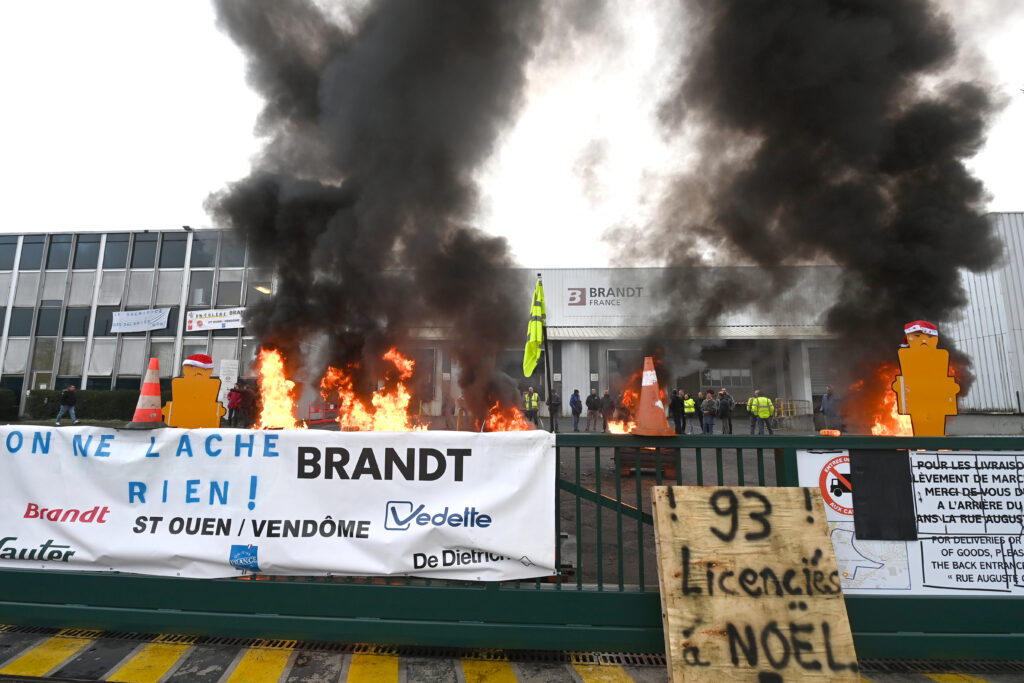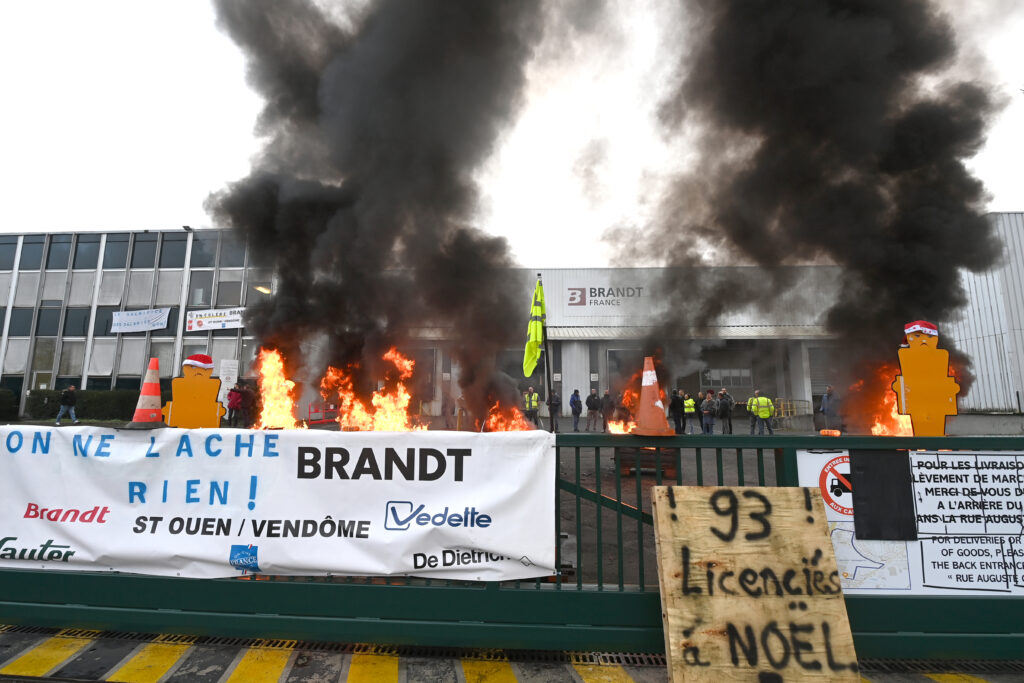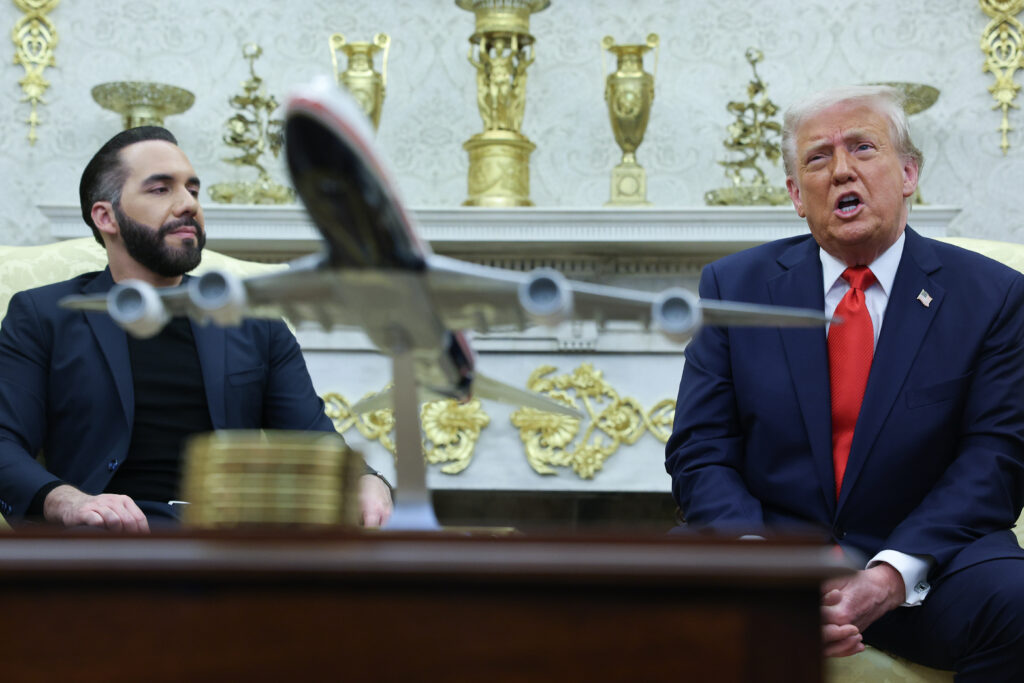UN experts slam US blockade on Venezuela
Four United Nations rights experts on Wednesday condemned the US partial naval blockade of Venezuela, determining it illegal armed aggression and calling on the US Congress to intervene.The United States has deployed a major military force in the Caribbean and has recently intercepted oil tankers as part of a naval blockade against Venezuelan vessels it considers to be under sanctions.”There is no right to enforce unilateral sanctions through an armed blockade,” the UN experts said in a joint statement.A blockade is a prohibited use of military force against another country under the UN Charter, they added.”It is such a serious use of force that it is also expressly recognised as illegal armed aggression under the General Assembly’s 1974 Definition of Aggression,” they said.”As such, it is an armed attack under article 51 of the Charter — in principle giving the victim state a right of self-defence.”US President Donald Trump accuses Venezuela of using oil, the South American country’s main resource, to finance “narcoterrorism, human trafficking, murders, and kidnappings”.Caracas denies any involvement in drug trafficking. It says Washington is seeking to overthrow its president, Nicolas Maduro, in order to seize Venezuelan oil reserves, the largest in the world.Since September, US forces have launched dozens of air strikes on boats that Washington alleges, without showing evidence, were transporting drugs. More than 100 people have been killed.- Congress should ‘intervene’ -“These killings amount to violations of the right to life. They must be investigated and those responsible held accountable,” said the experts.”Meanwhile, the US Congress should intervene to prevent further attacks and lift the blockade,” they added.They called on countries to take measures to stop the blockade and illegal killings, and bring perpetrators justice.The four who signed the joint statement are: Ben Saul, special rapporteur on protecting human rights while countering terrorism; George Katrougalos, the expert on promoting a democratic and equitable international order; development expert Surya Deva; and Gina Romero, who covers the right to freedom of peaceful assembly and association.UN experts are independent figures mandated by the UN Human Rights Council to report their findings. They do not, therefore, speak for the United Nations itself.On Tuesday at the UN in New York, Venezuela, having requested an emergency meeting of the Security Council, accused Washington of “the greatest extortion known in our history”.
Brandt: un industriel propose de sauver 150 emplois sur le site d’Orléans
Un cadeau de Noël pour des salariés de Brandt? L’homme d’affaires Stephan Français, patron de Thomson Computing, a proposé mercredi de reprendre l’usine d’Orléans du groupe d’électroménager en liquidation judiciaire et de sauver 150 emplois.Il prévoit de continuer une partie de la production de petit et gros électroménager, l’activité historique de Brandt, et d’y ajouter celle de produits électroniques et informatiques, coeur de métier de Thomson Computing.”Aujourd’hui nous avons une solution de reprise, de redémarrage, de renouveau, (…) elle s’appelle Stephan Français”, a déclaré le maire d’Orléans Serge Grouard, lors d’une conférence de presse commune avec le patron de 56 ans.Le projet porte sur une reprise du site d’Orléans, de loin le plus important de Brandt. Il rassemblait 350 salariés sur les 700 que comptait l’entreprise, avant la liquidation.”Il faut aller très vite pour relancer la machine, relancer la production, garder un coeur de salariés et garder le plus de clients possible”, a martelé l’élu, devant des journalistes réunis à l’hôtel de ville. Il a qualifié le projet de “sérieux”, même s’il présente une “part de risque”.M. Grouard se démène depuis plusieurs semaines pour trouver une solution afin de sauver Brandt, fleuron industriel français qui comptait deux usines en Centre-Val de Loire, à Vendôme (Loir-et-Cher) et à Saint-Jean-de-la-Ruelle, au sein de l’agglomération orléanaise.L’entreprise, basée à Rueil-Malmaison (Hauts-de-Seine), disposait aussi d’un service après-vente à Saint-Ouen-l’Aumône (Val-d’Oise).La société commercialisait quatre grandes marques: De Dietrich, Brandt, Vedette et Sauter.Se disant attentif à la “maîtrise des coûts”, M. Français a précisé que son projet commencerait avec “150 salariés” dès l’année prochaine. “Après, progressivement, si les résultats sont là, on embauchera”, a-t-il affirmé, évoquant “jusqu’à 250 salariés sur un plan à cinq ans”.Pour mener à bien son projet, l’homme d’affaires a évoqué un budget de 25 millions d’euros. La mairie d’Orléans a précisé à l’AFP que 9 millions d’euros seraient apportés par des entités publiques et qu’un tour de table avec les banques était en discussion.- Bercy reste prudent -M. Français souhaite s’appuyer sur l’expérience de son entreprise actuelle, lointaine héritière du géant industriel français Thomson.A l’été 2013, cet ancien de la chaîne de magasins informatiques Surcouf avait conclu un contrat de licence auprès de Technicolor, qui détient la marque Thomson, celle pour l’activité téléviseurs étant exploitée par le Chinois TCL.Sa société fabrique depuis des ordinateurs entrée de gamme. Elle revendique sur son site internet un tiers de part de marché pour les ordinateurs vendus moins de 300 euros en France.Pour prendre vie, le projet de reprise du site d’Orléans de Brandt devra être validé par le tribunal des activités économiques de Nanterre qui a prononcé le 11 décembre la liquidation judiciaire de l’entreprise, a souligné M. Français.Un appel d’offres pour la reprise de l’usine doit être lancé courant janvier, a précisé Bercy.Le projet de M. Français aura-t-il plus de succès que celui de Scop (société coopérative et participative), soutenu par le groupe Revive, rejeté début décembre par le tribunal ?”Toute piste de reprise mérite d’être examinée avec attention, mais aucune ne saurait être tenue pour acquise sans un travail d’analyse approfondi”, a tempéré auprès de l’AFP le ministre délégué à l’Industrie, Sébastien Martin.Ce dernier avait déclaré au lendemain de la liquidation judiciaire qu’un projet industriel restait possible, pas forcément dans le secteur de l’électroménager.L’entreprise, centenaire et emblématique du patrimoine industriel français, pâtit depuis plusieurs décennies des temps difficiles vécus par le secteur du gros électroménager.Elle est passée au gré des rachats et liquidations judiciaires entre les mains de l’Israélien Elco, puis celles de l’Espagnol Fagor, avant d’être repris en 2014 par le groupe algérien Cevital.
Brandt: un industriel propose de sauver 150 emplois sur le site d’Orléans
Un cadeau de Noël pour des salariés de Brandt? L’homme d’affaires Stephan Français, patron de Thomson Computing, a proposé mercredi de reprendre l’usine d’Orléans du groupe d’électroménager en liquidation judiciaire et de sauver 150 emplois.Il prévoit de continuer une partie de la production de petit et gros électroménager, l’activité historique de Brandt, et d’y ajouter celle de produits électroniques et informatiques, coeur de métier de Thomson Computing.”Aujourd’hui nous avons une solution de reprise, de redémarrage, de renouveau, (…) elle s’appelle Stephan Français”, a déclaré le maire d’Orléans Serge Grouard, lors d’une conférence de presse commune avec le patron de 56 ans.Le projet porte sur une reprise du site d’Orléans, de loin le plus important de Brandt. Il rassemblait 350 salariés sur les 700 que comptait l’entreprise, avant la liquidation.”Il faut aller très vite pour relancer la machine, relancer la production, garder un coeur de salariés et garder le plus de clients possible”, a martelé l’élu, devant des journalistes réunis à l’hôtel de ville. Il a qualifié le projet de “sérieux”, même s’il présente une “part de risque”.M. Grouard se démène depuis plusieurs semaines pour trouver une solution afin de sauver Brandt, fleuron industriel français qui comptait deux usines en Centre-Val de Loire, à Vendôme (Loir-et-Cher) et à Saint-Jean-de-la-Ruelle, au sein de l’agglomération orléanaise.L’entreprise, basée à Rueil-Malmaison (Hauts-de-Seine), disposait aussi d’un service après-vente à Saint-Ouen-l’Aumône (Val-d’Oise).La société commercialisait quatre grandes marques: De Dietrich, Brandt, Vedette et Sauter.Se disant attentif à la “maîtrise des coûts”, M. Français a précisé que son projet commencerait avec “150 salariés” dès l’année prochaine. “Après, progressivement, si les résultats sont là, on embauchera”, a-t-il affirmé, évoquant “jusqu’à 250 salariés sur un plan à cinq ans”.Pour mener à bien son projet, l’homme d’affaires a évoqué un budget de 25 millions d’euros. La mairie d’Orléans a précisé à l’AFP que 9 millions d’euros seraient apportés par des entités publiques et qu’un tour de table avec les banques était en discussion.- Bercy reste prudent -M. Français souhaite s’appuyer sur l’expérience de son entreprise actuelle, lointaine héritière du géant industriel français Thomson.A l’été 2013, cet ancien de la chaîne de magasins informatiques Surcouf avait conclu un contrat de licence auprès de Technicolor, qui détient la marque Thomson, celle pour l’activité téléviseurs étant exploitée par le Chinois TCL.Sa société fabrique depuis des ordinateurs entrée de gamme. Elle revendique sur son site internet un tiers de part de marché pour les ordinateurs vendus moins de 300 euros en France.Pour prendre vie, le projet de reprise du site d’Orléans de Brandt devra être validé par le tribunal des activités économiques de Nanterre qui a prononcé le 11 décembre la liquidation judiciaire de l’entreprise, a souligné M. Français.Un appel d’offres pour la reprise de l’usine doit être lancé courant janvier, a précisé Bercy.Le projet de M. Français aura-t-il plus de succès que celui de Scop (société coopérative et participative), soutenu par le groupe Revive, rejeté début décembre par le tribunal ?”Toute piste de reprise mérite d’être examinée avec attention, mais aucune ne saurait être tenue pour acquise sans un travail d’analyse approfondi”, a tempéré auprès de l’AFP le ministre délégué à l’Industrie, Sébastien Martin.Ce dernier avait déclaré au lendemain de la liquidation judiciaire qu’un projet industriel restait possible, pas forcément dans le secteur de l’électroménager.L’entreprise, centenaire et emblématique du patrimoine industriel français, pâtit depuis plusieurs décennies des temps difficiles vécus par le secteur du gros électroménager.Elle est passée au gré des rachats et liquidations judiciaires entre les mains de l’Israélien Elco, puis celles de l’Espagnol Fagor, avant d’être repris en 2014 par le groupe algérien Cevital.
Le président du Salvador menace de libérer tous les prisonniers de sa méga-prison
Le président de droite salvadorien, Nayib Bukele, a rejeté mardi les accusations de tortures dans la méga-prison de haute sécurité du Salvador où sont notamment incarcérés les migrants vénézuéliens expulsés des États-Unis, menaçant de libérer tous les prisonniers y compris les chefs de gangs.Les conditions de détention dans ce Cecot (Centre de confinement du terrorisme) …
Le président du Salvador menace de libérer tous les prisonniers de sa méga-prison Read More »
Rome impose à Meta des mesures permettant l’arrivée sur WhatsApp d’autres IA
Le gendarme italien de la concurrence a annoncé mercredi dans un communiqué avoir ordonné au géant américain Meta, maison-mère de WhatsApp, mais aussi de Facebook et Instagram, “la suspension des conditions qui excluent les chatbots IA concurrents de WhatsApp”.Meta a intégré dans son service de messagerie WhatsApp son propre agent d’intelligence artificielle (IA), Meta AI, …
Rome impose à Meta des mesures permettant l’arrivée sur WhatsApp d’autres IA Read More »
La cyberattaque contre La Poste perd en intensité à deux jours de Noël
La cyberattaque, revendiquée par des hackers prorusses, qui a touché La Poste à quelques jours de Noël était “toujours en cours” mardi soir, mais avait “perdu en intensité”, selon l’opérateur postal.Le parquet de Paris a indiqué à l’AFP qu’il avait ouvert une enquête “pour des faits d’entrave au fonctionnement d’un système de traitement automatisé de …
La cyberattaque contre La Poste perd en intensité à deux jours de Noël Read More »






